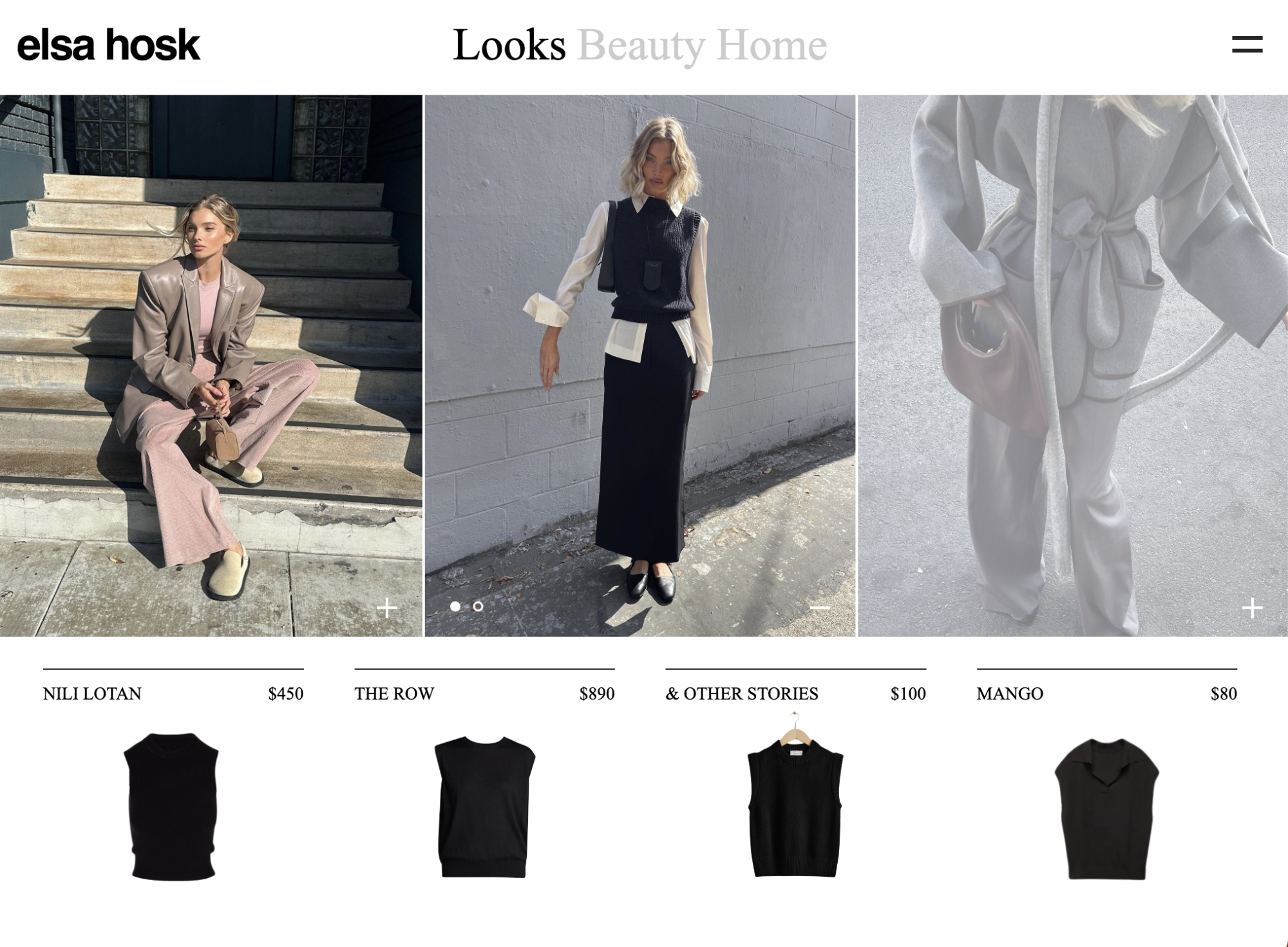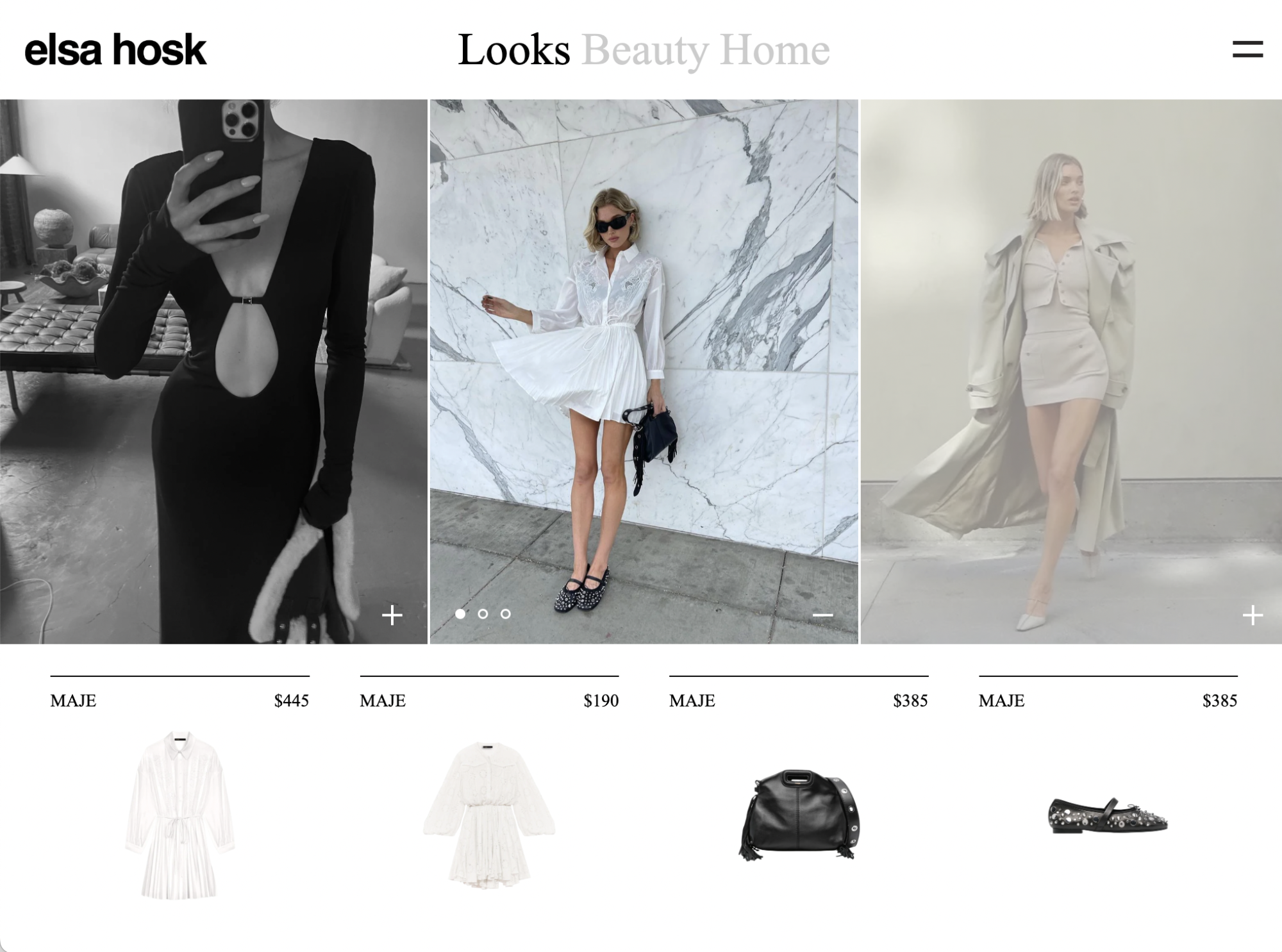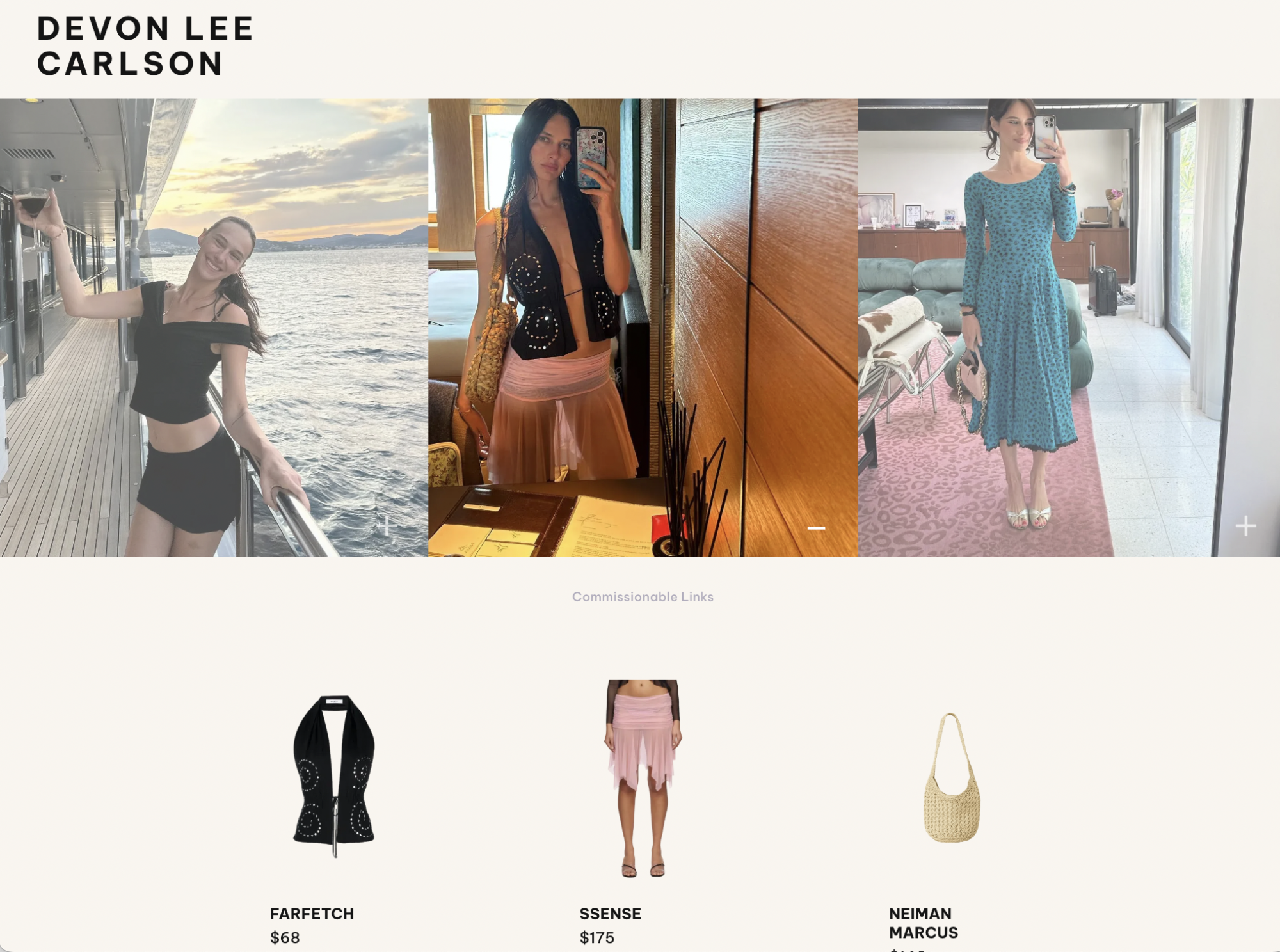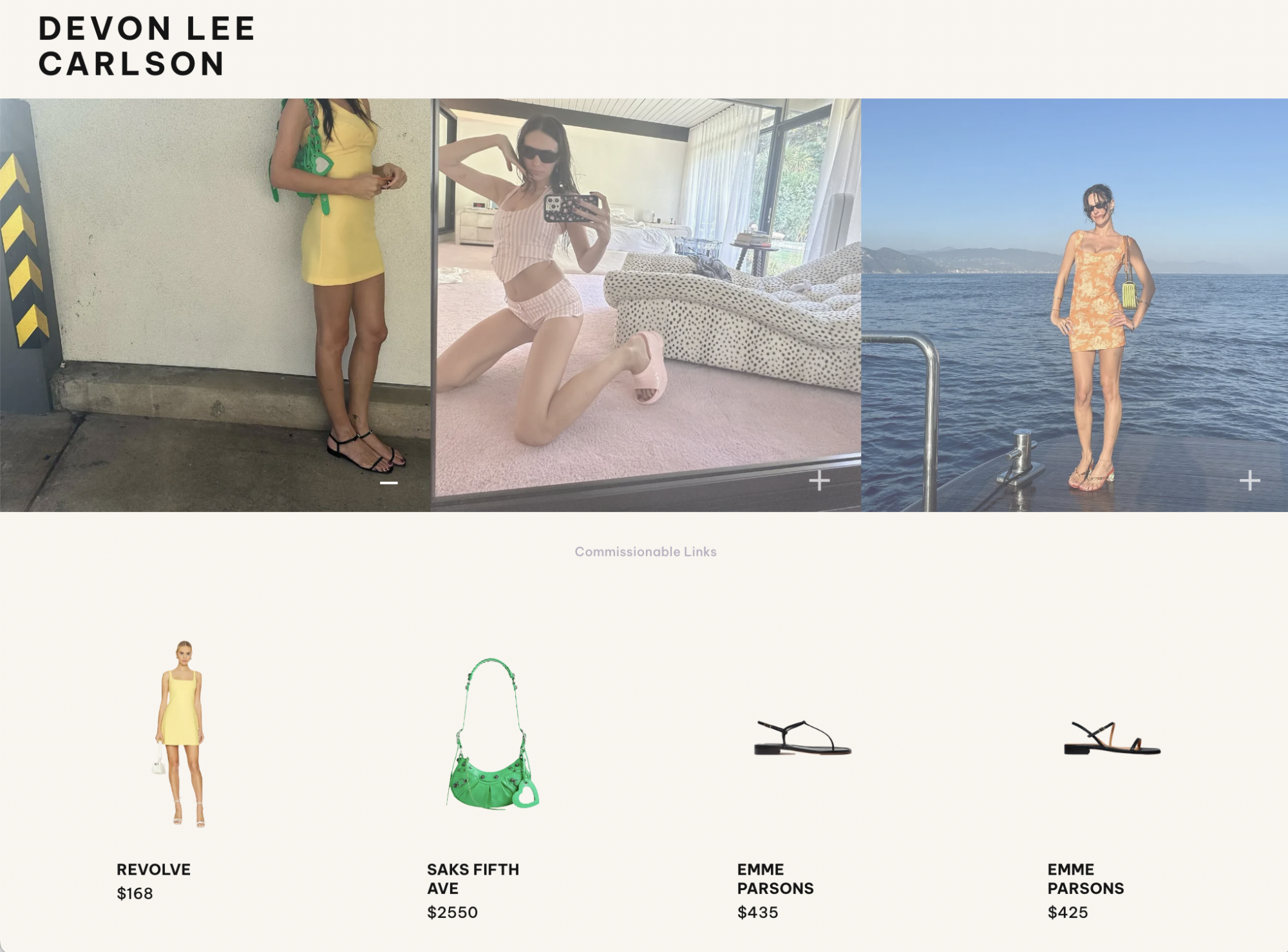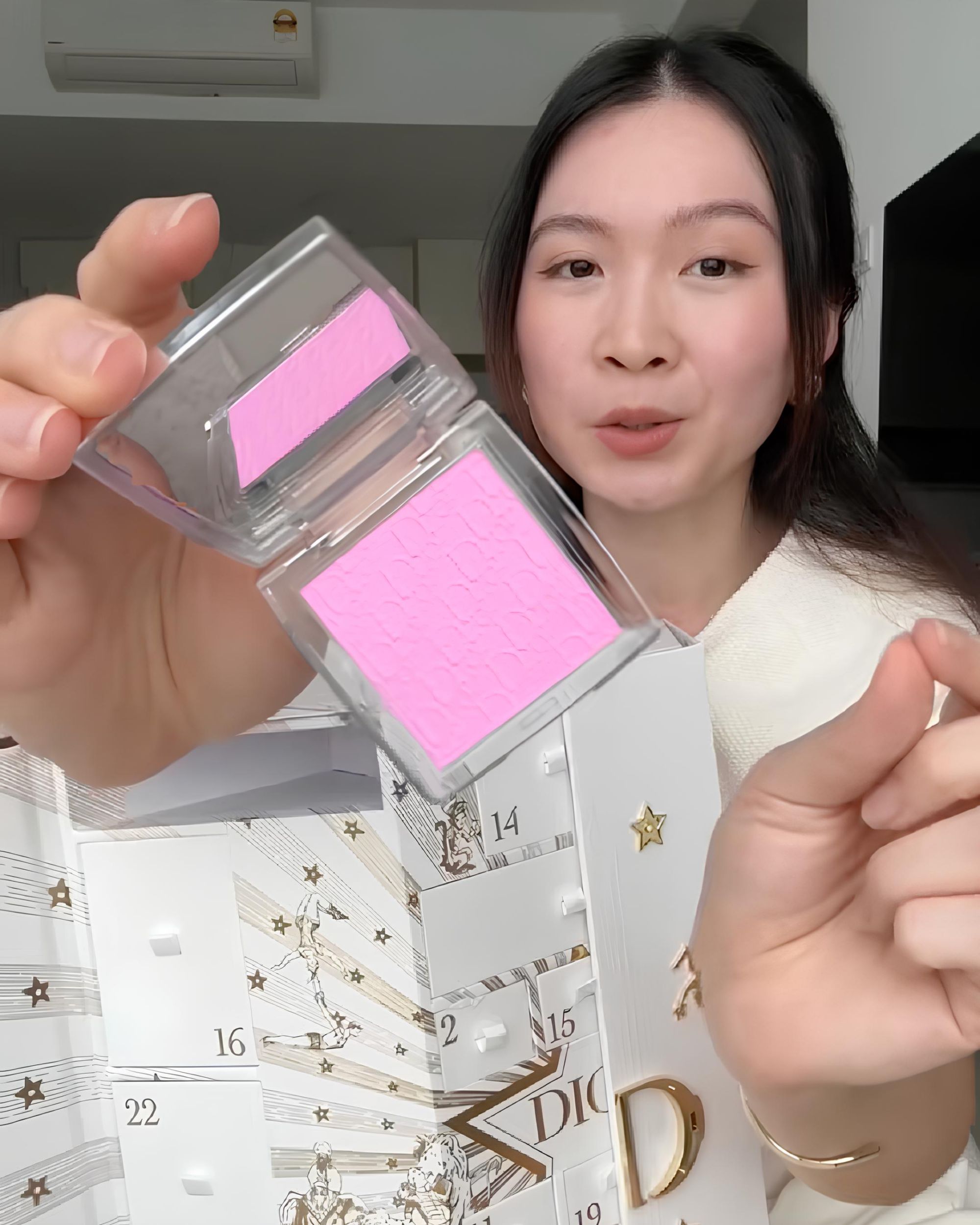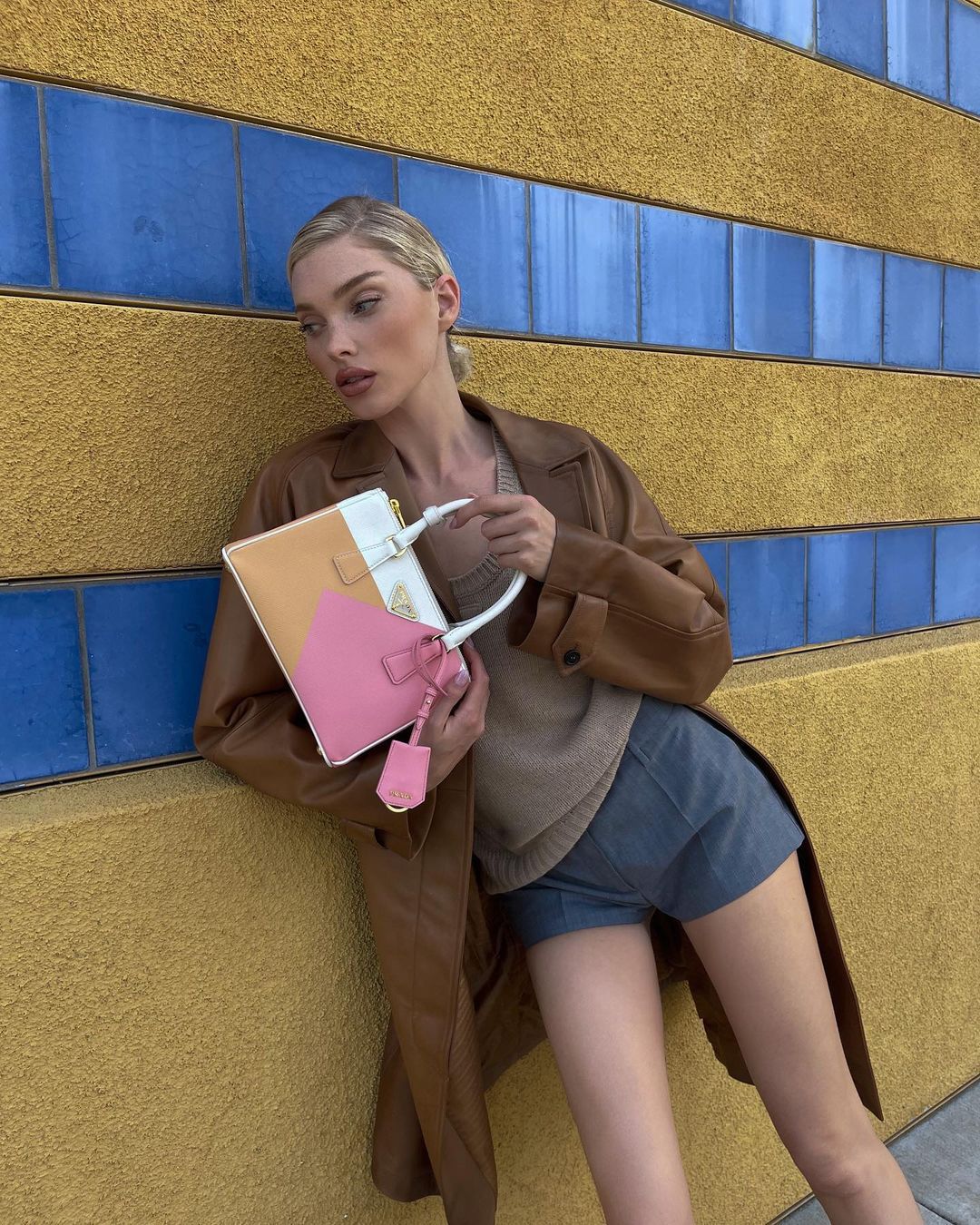
Influencers have found a new way to make money An endless archive of affiliate links
If you casually hang out on the web and are passionate about following the up and coming it-girls, Devon Lee Carlson's name definitely appears among your Instagram followings. With a pearly white smile, long dark hair and a killer wardrobe, the Californian entrepreneur and model has made a fortune with her Wildlflower Cases brand as well as with her unmistakable, eclectic, 2000s style that has enchanted her ever growing fanbase. On YouTube, Carlson gets ready in a walk-in wardrobe filled with accessories and designer clothes, including vintage Gucci and new Celine collections that have motivated over 300,000 subscribers to comment «where did you get that?» for years. As of a few weeks ago, this question has only had one answer: «check out my website.» Carlson, like other Instagram starlets including Elsa Hosk, Claire Holt and Leandra Medine Cohen has found a new way to make money that goes by the name of SMTM. Inspired by the days when social media didn't exist yet and influencers used to post their looks on blogs, the site generator archives all the outfits ever shared by these creators with a list of affiliate links from which these influencers earn a commission. «Stop working for them and start working for yourself,» reads SMTM's mission statement, indicating that working with them provides creators with an additional way to earn money, but more importantly a new tool to regulate brand partnerships. But how convenient is it really?
On the SMTM website, the founders - all women - state «We believe creators should own their platforms, not platforms owning the creators. We know empowerment through data will be the future of the creator economy. And we're obsessed with designing digital experiences that delight customers and bring back the fun in shopping.» Sponsored ads, collaborations between brands and influencers to advertise products on the creators' instagram page, have always been the most lucrative way to make money on social media. You snap a selfie on the fly wearing Miu Miu's new underwear and suddenly you get a transfer in your bank account - at which point, however, the partnership ends until a new project comes along. This is where SMTM comes into play: by collecting all the influencer's looks in a domain outside Meta and associating to each garment the site where they can buy it, every time one of their followers shops through that link it hands the creators a percentage. In reality, this resource does not earn them more than a brand partnerships, but a tool to increase revenue, albeit slightly. What makes a real profit is the site builder, which takes advantage of the traffic generated and the commissions.
According to Pia Baronicini's review, an American influencer who also uses SMTM for her fashion brand, the site builder allows her to «make a link in a second. I’m able to house my content while generating dollars and gathering data to enhance my partnerships or start news ones.» Based solely on re-shared images and direct links to online stores, the sole purpose of these new sites would appear to be lucrative. There is no text describing the look, no romanticised explanation of how The Row's new Italian leather handbag has changed Elsa Hosk's life - who, moreover, also has a Home section on her site where all her furniture can be purchased: the only thing you can do on the model's site is scroll and shop. The rise of site builders such as SMTM's could point to two critical aspects related to influencer marketing: the first is that online creators are deciding to move away from Meta platforms towards independent alternatives, the second is that consumers have stopped believing in storytelling, firstly due to the much discussed deinfluencing and secondly due to users' ever increasing social media awareness - proof of this are the latest influencer brands flops. Hosk and Carlson's sites are aseptic, unimaginative, but offer any - wealthy, mind you - fan the chance to copy the wardrobe of their favourite it-girls with a single click. For everyone else, there's Pinterest.









































